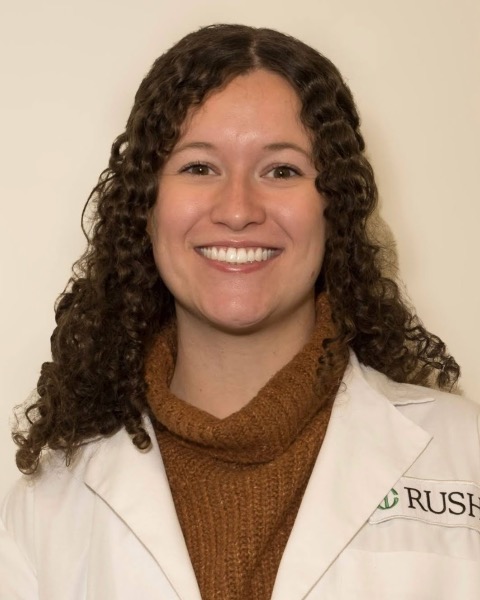Adult Diagnostic (AD)
PP1603 - Scratching the Surface: A Case of Self-Inflicted Middle-Ear Injury

Sydney A. Dejewski
Student
Rush University
Rush University
Wayne, New JerseyDisclosure(s): No financial or nonfinancial relationships to disclose.
- AH
Ayelet Hamburger, AuD
Clinical Audiologist
Rush University Medical Center
Rush University Medical Center
Chicago, IllinoisDisclosure(s): No financial or nonfinancial relationships to disclose.

Uzma Akhtar, PhD, AuD
Assistant Professor
Rush University Medical Center
Rush UniversityDisclosure(s): No financial or nonfinancial relationships to disclose.
Lead Presenter(s)
Contributor(s)
This poster describes clinical findings in a patient who caused middle ear damage due to ear canal manipulation, resulting in a rare self-inflicted isolated malleus fracture. The diagnosis was confirmed through middle ear exploration surgery, and ossicular reconstruction was performed. However, the patient did not report improvements in hearing ability. A review of the literature shows that the rate of subjective improvement from ossicular reconstruction is low. Findings suggest that non-surgical diagnostic tools such as wideband tympanometry may be useful in diagnosing ossicular disarticulation and isolated malleus fractures secondary to self-inflicted barotrauma, reducing the need for middle ear exploration surgery.
Summary:
The purpose of this poster is to discuss the clinical presentation, diagnosis, and treatment of isolated malleus fractures secondary to self-inflicted barotrauma. This is a rare diagnosis, with approximately 100 cases reported. It is not clear if the number is so small because there are truly very few cases, or if they are not being properly diagnosed and reported. This poster will provide information on potential symptoms and clinical presentations of isolated malleus fracture that can aid in diagnosis. The information presented is also intended to demonstrate the importance of wideband tympanometry to highlight its clinical utility in regular practice.
This poster will describe one patient who inflicted middle ear damage due to external auditory canal manipulation. This patient exhibited a mild to moderate conductive hearing loss and a high static admittance in the affected ear. The patient underwent surgical middle ear exploration, which lead to the diagnosis of an isolated malleus fracture, and fracture immobilization with bone cement was performed. Following the patient’s surgery, no significant objective or subjective hearing improvements were reported.
A literature review indicated that surgery is the most common method of both diagnosing and treating ossicular disarticulation. The literature review revealed that while air-bone gaps may decrease, they are not expected to close entirely (Lovin, et al., 2023). Additionally, nearly half of ossicular repairs do not improve subjective hearing ability (Allzharani, et al., 2020). Risks of ossicular reconstruction include facial nerve damage, increased hearing loss, and infection. This presentation will outline the risks and potential outcomes of ossicular disarticulation, which can help guide clinical decision-making and counseling to patients.
Wideband tympanometry is suggested as an alternative to diagnose ossicular disarticulation without surgery. Wideband tympanometry uses a click stimulus to assess middle ear function from 226 to 8000 Hz. This test provides an absorbance tracing, and an estimation of the patient’s resonant frequency. For a patient with ossicular discontinuity, we would expect a reduced resonant frequency and a lower-frequency peak of absorbance. This can be used to avoid exploratory surgery for differential diagnosis of middle ear pathologies. There is a lack of knowledge about the benefits of wideband tympanometry, as well as a lack of funding for clinics to access equipment with the ability to perform this test. This poster will include information on wideband testing, billing, and application that can be implemented in clinical practice. Widespread use of wideband tympanometry in the clinic would allow audiologists to better diagnose, manage, and counsel patients with middle ear injury.
Learning Objectives:
- Upon completion, participant will be able to outline potential causes and clinical manifestations of self-inflicted barotrauma and damage to the middle ear.
- Upon completion, participant will be able to identify treatment options for self-inflicted middle ear damage, as well as realistic expectations for outcomes.
- Upon completion, participant will be able to illustrate ways to non-invasively diagnose middle ear damage due to self-inflicted barotrauma.
